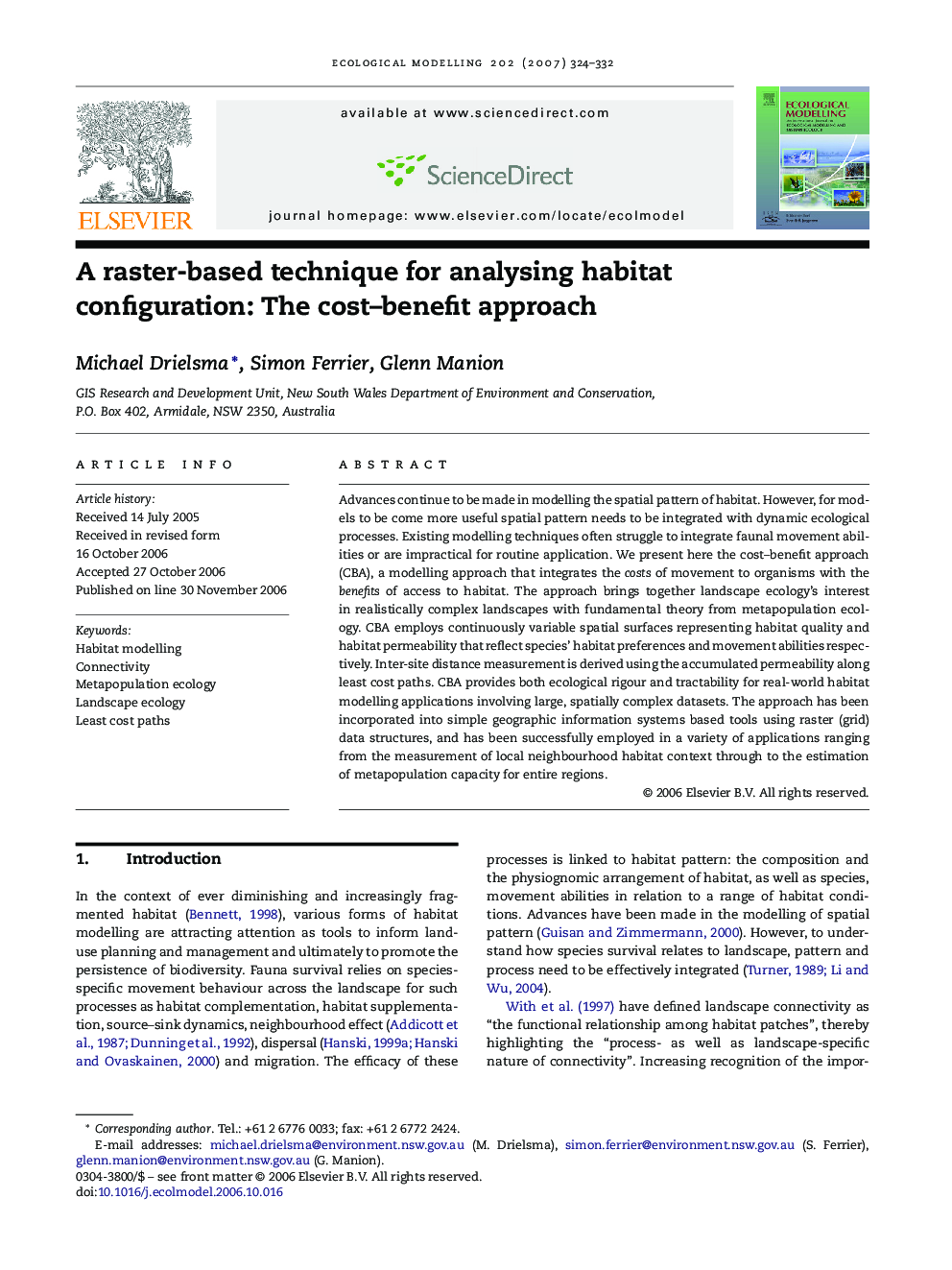| Article ID | Journal | Published Year | Pages | File Type |
|---|---|---|---|---|
| 4378664 | Ecological Modelling | 2007 | 9 Pages |
Abstract
Advances continue to be made in modelling the spatial pattern of habitat. However, for models to be come more useful spatial pattern needs to be integrated with dynamic ecological processes. Existing modelling techniques often struggle to integrate faunal movement abilities or are impractical for routine application. We present here the cost-benefit approach (CBA), a modelling approach that integrates the costs of movement to organisms with the benefits of access to habitat. The approach brings together landscape ecology's interest in realistically complex landscapes with fundamental theory from metapopulation ecology. CBA employs continuously variable spatial surfaces representing habitat quality and habitat permeability that reflect species' habitat preferences and movement abilities respectively. Inter-site distance measurement is derived using the accumulated permeability along least cost paths. CBA provides both ecological rigour and tractability for real-world habitat modelling applications involving large, spatially complex datasets. The approach has been incorporated into simple geographic information systems based tools using raster (grid) data structures, and has been successfully employed in a variety of applications ranging from the measurement of local neighbourhood habitat context through to the estimation of metapopulation capacity for entire regions.
Related Topics
Life Sciences
Agricultural and Biological Sciences
Ecology, Evolution, Behavior and Systematics
Authors
Michael Drielsma, Simon Ferrier, Glenn Manion,
